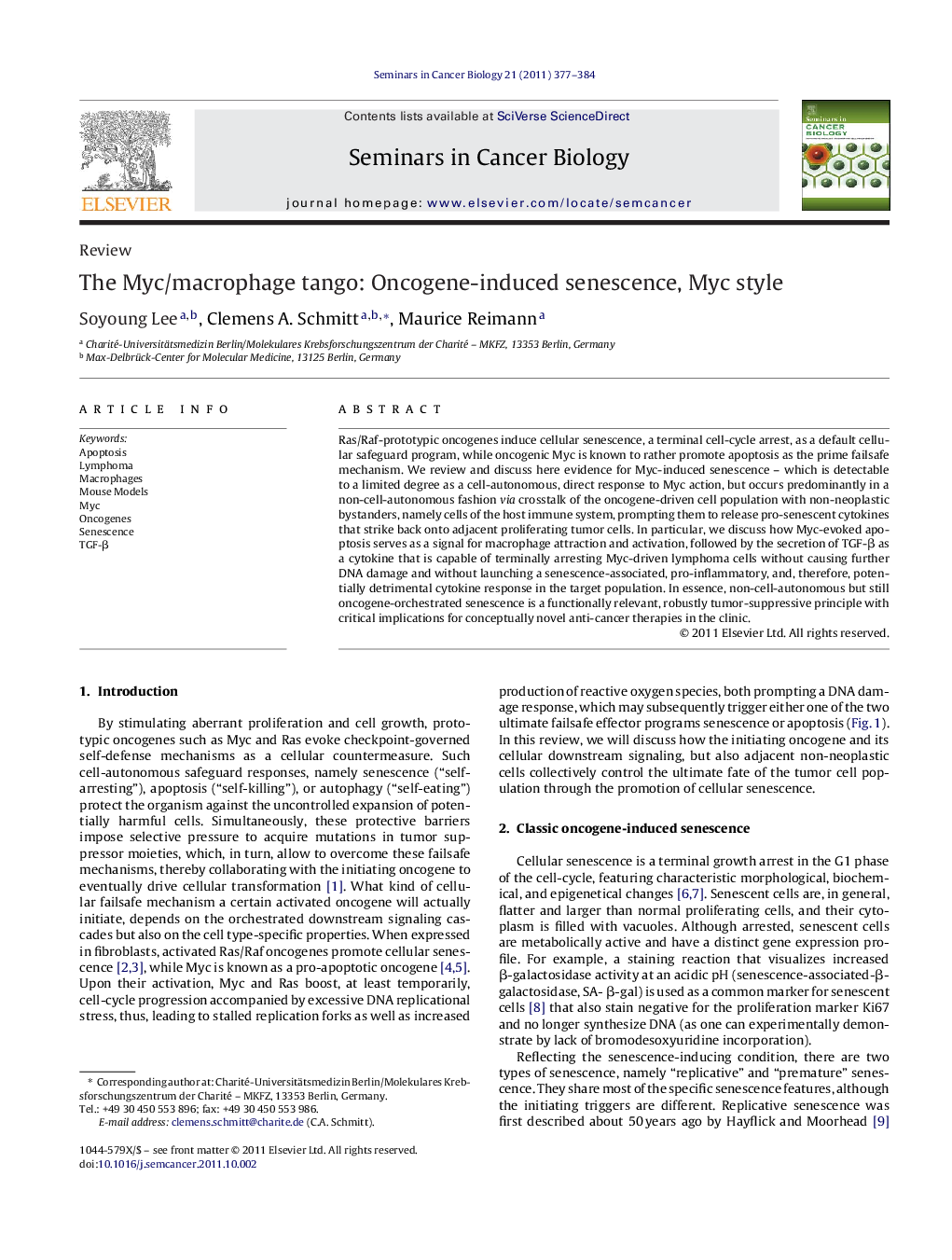| Article ID | Journal | Published Year | Pages | File Type |
|---|---|---|---|---|
| 2023947 | Seminars in Cancer Biology | 2011 | 8 Pages |
Ras/Raf-prototypic oncogenes induce cellular senescence, a terminal cell-cycle arrest, as a default cellular safeguard program, while oncogenic Myc is known to rather promote apoptosis as the prime failsafe mechanism. We review and discuss here evidence for Myc-induced senescence – which is detectable to a limited degree as a cell-autonomous, direct response to Myc action, but occurs predominantly in a non-cell-autonomous fashion via crosstalk of the oncogene-driven cell population with non-neoplastic bystanders, namely cells of the host immune system, prompting them to release pro-senescent cytokines that strike back onto adjacent proliferating tumor cells. In particular, we discuss how Myc-evoked apoptosis serves as a signal for macrophage attraction and activation, followed by the secretion of TGF-β as a cytokine that is capable of terminally arresting Myc-driven lymphoma cells without causing further DNA damage and without launching a senescence-associated, pro-inflammatory, and, therefore, potentially detrimental cytokine response in the target population. In essence, non-cell-autonomous but still oncogene-orchestrated senescence is a functionally relevant, robustly tumor-suppressive principle with critical implications for conceptually novel anti-cancer therapies in the clinic.
